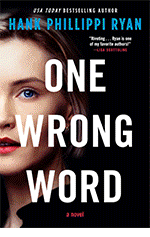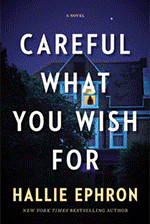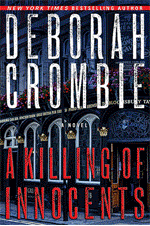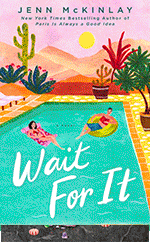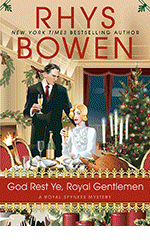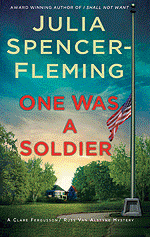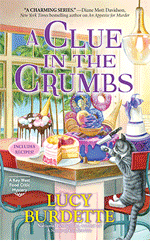JULIA SPENCER-FLEMING: I hope the rest of you are feeling as pleased as I am - presents purchased, decorating sorted (Virginia's doing it) meal planned and festive outing in the works. If you've been very good this year, you undoubtedly deserve some sugar plums this holiday - plus, making them is a delightful activity for you and your friend or nibling or grandchild.
.jpg) Good morning everyone and I wish you all the Compliments of
this Happy Season! Julia has again invited me to talk about food and my living
experiences here in Sudbury. In fact I have moved, with the help of friends
enough furniture down from Maine that I fear I won’t recognize my home when I
next visit. But let’s get on what has been happening not to mention making some
delicious Sugar Plums.
Good morning everyone and I wish you all the Compliments of
this Happy Season! Julia has again invited me to talk about food and my living
experiences here in Sudbury. In fact I have moved, with the help of friends
enough furniture down from Maine that I fear I won’t recognize my home when I
next visit. But let’s get on what has been happening not to mention making some
delicious Sugar Plums.
“While Visions of Sugarplums danced in their heads”
My Social Media has been full of Nutcracker related photos and stories beginning with the adorable photos of Debs with her granddaughter at their local performance of the Nutcracker and how much they had enjoyed the performance looking at their smiles. Another friend who is of grandfather status wrote about attending his 1632nd performance of his granddaughter who has two leading roles this year. One as the Mother Ginger first child and the second as the porcelain doll in a beautiful costume which made it into our local paper. I think she isn’t even thirteen yet. But she is totally committed to her life as a dancer. I wonder she will pursue this dream into adulthood? But I think I would give her grandfather the longevity prize for faithful attendance. There is something rather awe-inspiring watching a group of children completely devoted to their art.
I had that pleasure this past week as a group of middle schoolers from a local prep school came to bring the musical holidays to my assisted living space. I can’t get out to go to the many holiday concerts as Victor and I did in the past, so this was a special treat. I have to admit I did wonder if we would be treated to a performance of the dreaded Christmas pops but that was not the case. I sat and listened to trios, quartets, an eight handed piano piece. I loved watching these teen kids finish their performance with a rousing rendition of the Trepak dance from the Nutcracker which they played with considerable brio. What a joy to see their dedication to serious music. I was asked if I played an instrument.My short answer is No! But I have another response which is my truth -My role is to be an audience to whichever muse calls to me. As I told the young musicians, “Every performer needs an audience”, to which they agreed. So whatever activity appeals to the child in your life I believe it is most worthwhile to help them achieve it.
 But it is time to address our main topic - Christmas Food.
Last year I introduced you to the sugar plums that we can eat while dancing
should one wish. As I wrote last year I found a recipe hiding among my many
food notes with the heading “Sugarplums”, Courtesy of Eleanor Watson.
But it is time to address our main topic - Christmas Food.
Last year I introduced you to the sugar plums that we can eat while dancing
should one wish. As I wrote last year I found a recipe hiding among my many
food notes with the heading “Sugarplums”, Courtesy of Eleanor Watson.
“Goodness, Eleanor Watson one of the best loved and remembered people in Limerick, Maine. We were invited to her Christmas gathering the first year we moved here. She lived in a beautiful old house, pre Victorian I think. Would that make it Empire, Revolutionary or Federal? I’m not much good on the history of architecture. However there were open fire places with burning logs to warm us, a colonial kitchen and rooms filled with antique furniture which she showed off to me seeing my interest. She is another person I miss and wish I had asked her for stories. But on the kitchen table, along with her delicious food, was this gift of a recipe card for the taking”.
 Julia and I agreed that one can never have too many sugar
plums in ones life. So I offer you sugar plums to make and share with friends,
to enjoy through the Holidays or as I love to entertain on Twelvth Night these
make an excellent addition for dessert
Julia and I agreed that one can never have too many sugar
plums in ones life. So I offer you sugar plums to make and share with friends,
to enjoy through the Holidays or as I love to entertain on Twelvth Night these
make an excellent addition for dessert
Now I had never made Sugarplums before last year, but with a food processor anything is possible. Eleanor said her recipe made a hundred pieces of deliciousness, but as Julia and I found Eleanor’s quantities made many more than one hundred.so I recommend you half the recipe unless you are making gifts for a crowd. I also did a little research online and adding or omitting ingredients seems to be par for the course. I plan to measure the total liquid which will give me an idea of how much liquid is needed for the amount of dry ingredients. I plan to add some dried cranberries and cherries too. This recipe doesn’t have any spices in it so I will add a little of my favorite spices as well.
SUGARPLUMS - Courtesy of Eleanor Watson
1 lb. chopped dates
1 lb. chopped raisins - I am using golden raisins or sultanas (their English name)
1 lb. currents - I am omitting as couldn’t find them but will add cranberries and cherries here
Chop all finely in the Food Processor - set aside
1 lb. chopped blanched almonds
1 lb. chopped unsalted, shelled pistachio nuts (I will not use pistachios but make the weight up with other nuts.)
1/2 lb. chopped walnuts
1/2 lb. chopped pecans
Chop nuts in Food Processor - set aside
1/2 lb. crystallized ginger
Juice & grated rind of 1 orange
Juice & grated rind of 1 lemon
2 Tbsp - good sherry***
1 oz. - orange or peach brandy
Granulated sugar for rolling - let the deliciousness commence.
MY UPDATED RECIPE
I am weighing my dried fruit based on the total amount in Eleanor’s recipe which is 4 pounds of fruit. My measurements are not exactly halved as I changed them while I was prepping.
My ingredients*** are:
2 3/4 lb. mixed dried fruit -approximate weight
1/4 lb. figs
1/4 lb. dates without pits
1 1/2 lb. Mixed raisins and golden raisins (sultanas)
1/2 lb. cranberries
1 oz + dried orange slices (optional)
1/4 lb. cherries
1 1/2 lb. Mixed nuts, walnuts, almonds, pecans - I used what I had. Just check none of the nuts are rancid not freshly purchased . (Nuts are best stored in a freezer).
8 oz shredded coconut
4 oz. crystallized ginger
1 tsp. cardamom
1/2 tsp. each nutmeg and mace
Juice and grated rind of one orange and one lemon = about 1/3 cup, just enough to moisten
1/4 Cup Cointreau or other liquor
I shall make some with extra fruit juice as not everyone likes alcohol but I shall do some with Grand Marnier or Cointreau added in place of the sherry and fruit brandies.
METHOD:
Measure all the ingredients but keep the fruit and nuts separate, see below. If you don’t have a scale I suggest you buy the fruits and use the measurements on the bag to approximate the amounts. I don’t think an extra oz or so will hurt the recipe
Put the nuts, coconut and crystallized ginger together with any spices you like in the Food Processor and pulse several times to chop finely
Scrape into a bowl
Add and pulse the dried fruits and grated orange and lemon rind in the FP.
Add the chopped nuts and pulse to mix
Even though I have a 12 cup bowel on my FP and my Ninja cup is a little smaller, I had to half the quantities again before being able to mix the fruit, nuts mix and liquid together. This is where a digital scale comes in handy as you can place an empty bowl on the scale, adjust the weight back to zero then add ingredients. To finish I had two bowls weighing about one and a half pounds each to role into the sugarplums.
Depending on your quantity, now is the time to divide in half before mixing together and adding in the liquid through the funnel. I added a little at a time until the mix gathered on the blade. I don’t think it should be too wet.
Now for the fun part. Set up a plate with sugar on it and a plate with waxed paper to place the candies. Wet your hands and take a melon sized amount or slightly larger and roll into a ball, then roll in the sugar for that sparkle and set on a plate. If giving as gifts pack into a wax paper lined box with wax paper between the layers of sugarplums. I bought mini cup cake holders, which was a good way to present the sugar plums.
The final note: allow to sit in the fridge or a cold place for several days for the flavors to blend and add to the joy of eating a sugarplum. Plus, it’s Gluten Free!
I have simplified Eleanor’s process by adding the spices, coconut and ginger to the nuts, and grating the rind onto the pile of dried fruit
Did you make sugar plums last year or since you got the recipe? Do please let me know how they turned out.














